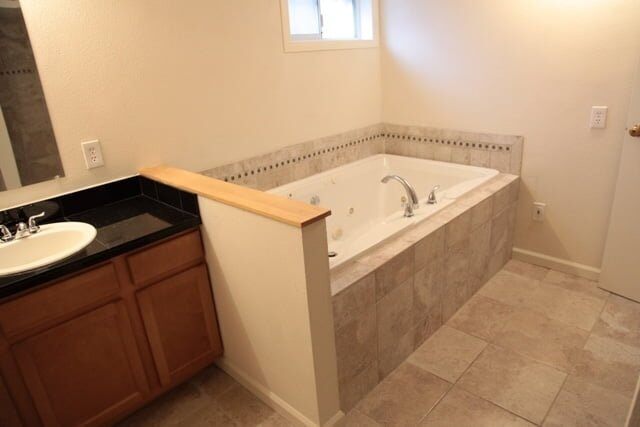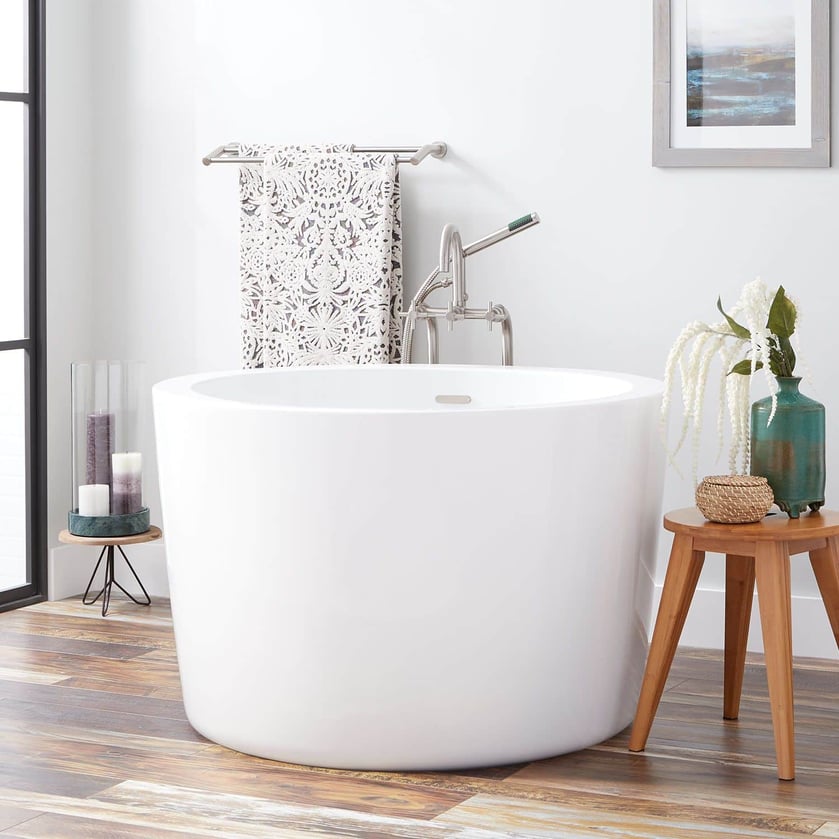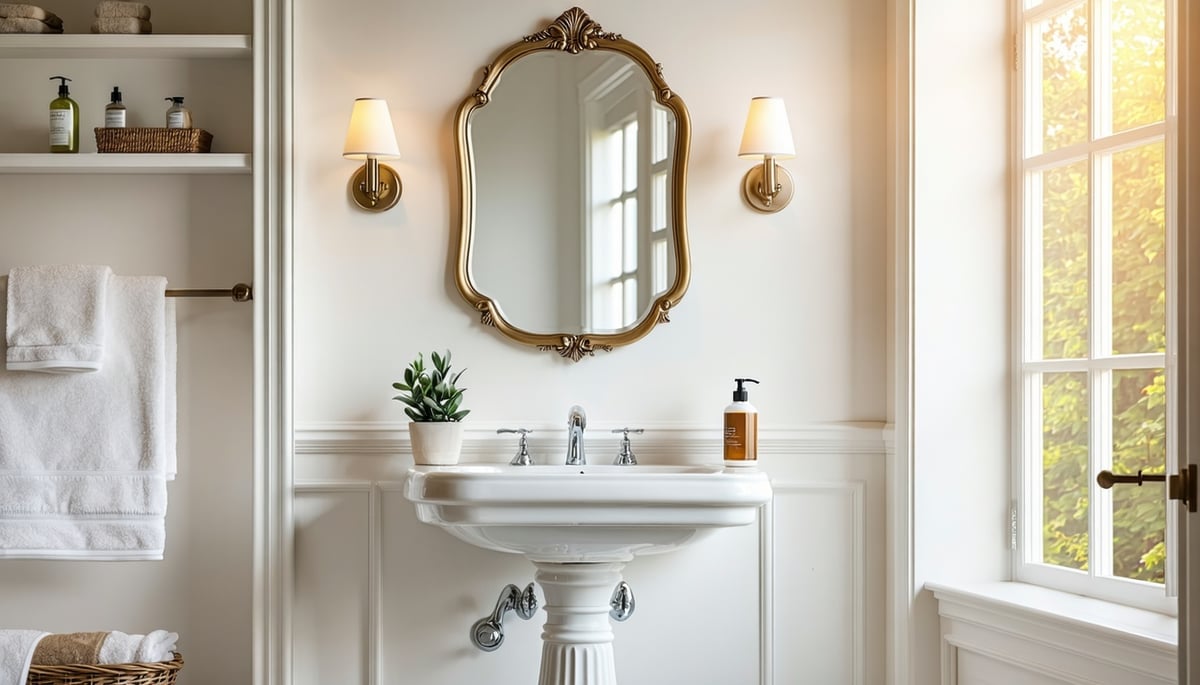Whether it’s because they enjoy a quiet evening spent soaking in the tub or simply need a place to easily bathe their young children, a bathtub is an important feature to many homeowners. So when the time comes to remodel your bathroom, it makes sense to take the opportunity to choose a bathtub with your specific needs in mind.
Our design team at Lamont Bros. has guided many Portland-area homeowners through the process of remodeling their bathrooms. An important step in this process is identifying what type of bathtub will best fit the remodel project. To achieve this goal, our designers research and choose bathtub options based on the personal needs of each homeowner.
To help you make the most of your bathroom remodel, we’re going to share with you the best ways we know for choosing a bathtub that meets your needs. By the time you reach the end of this page, you should be able to identify what factors to consider when making your selection. That way, you can be confident that the bathtub you end up with will be the right one for you. When choosing a bathtub for your bathroom remodel, you should consider the following:
- How much of your budget you want to spend on a tub
- The amount of space available in your bathroom
- What personal needs your tub should accommodate
How much should you spend on a bathtub?
When it comes to selecting a bathtub, one of the factors that most directly influences your choices is your budget. Chances are, a new bathtub is but one piece of a more complicated puzzle. Figuring out how much you want to spend on your tub is one of the first things you need to establish.
Fiberglass Tubs – $350-$500

As the most budget-friendly option, fiberglass bathtubs are the most common among average American households. Fiberglass is inexpensive to manufacture and install but is limited in size and design options. It’s also more susceptible to damage and can crack, stain, or scratch much easier than other bathtub materials. They also do not retain heat as well, so your bath may cool off faster than you’d like.
Fiberglass tubs most commonly feature a tub-shower combo design, which can be great for space but not so good in visual design. However, there are also individual fiberglass bathtub units. Generally, only one or two exterior sides of the tub are finished and smooth, so it must be placed in a corner or alcove. Freestanding fiberglass tubs are very uncommon.
Pros:
- Least expensive
- Easy to install
- Space-saving
Cons:
- Easily damaged
- Poor heat retention
- Limited sizes and designs
Acrylic Tubs – $500-$1,500
Versatile and cost-effective, acrylic is an excellent mid-grade material used for both alcove and freestanding bathtubs. Due to their versatility, acrylic tubs have a wide price range depending on the style, features, and complexity.
Fiberglass and acrylic are both plastic-based materials that share many similarities. However, a difference in the manufacturing process makes acrylic tubs much easier to customize and add unique surface design features. Although stronger than fiberglass, acrylic is still prone to scratches, stains, and cracks.
Acrylic retains heat exceptionally well and comes in a wide array of visual designs. Many people choose an acrylic bathtub because it is also lightweight and easy to install.
Pros:
- Reasonable cost
- Excellent heat retention
- Easy to install
Cons:
- Easily damaged
- Made of plastic
- Shorter lifespan
Porcelain-Enameled Steel Tubs – $600-$1,200
Considered a mid to high-range bathtub option, steel bathtubs with a porcelain-enamel finish are an excellent balance between price and functionality. Although slightly costlier than a fiberglass tub, they are much more resistant to scratches and stains. Due to the material properties of steel, however, these types of bathtubs are still vulnerable to cracking and only retain heat slightly better than fiberglass.
Like fiberglass tubs, you’ll find porcelain-enameled steel tubs most often come as alcove inserts or corner tubs. While there are a few freestanding steel tub options, they aren’t as common. Although not manufactured as a tub-shower combo, you can build a steel alcove tub into an alcove shower to achieve the same design. One major benefit of steel tubs is that they weigh substantially less than cast iron, so they are easier to install.

Pros:
- Good balance of cost and durability
- Resistant to scratches and stains
- Lasts longer than fiberglass or acrylic
Cons:
- May be prone to cracking
- Limited sizes and designs
- Mediocre heat retention
Cast Iron Tubs – $800-$2,500+

Considered one of the best bathtub materials available, it’s no surprise that cast iron comes in at the top price point. Though not as customizable as acrylic, cast iron still offers a wide range of design options, including freestanding and claw-footed tubs.
In terms of heat retention, there is no better material on the market. Cast iron is known for holding its heat and evenly distributing the heat across its surface. The greatest challenge with cast iron is the installation — a single cast iron tub can weigh over 1,000 pounds. Once it’s in, though, it’s there for good. Cast iron tubs have unparalleled longevity and can last over 70 years if properly maintained.
Pros:
- Top-level heat retention
- Many design options
- Long lifespan
Cons:
- Heavy and difficult to install
- Most expensive tub material
How much space do you have to work with?
Just as your budget can affect the material from which your tub is made, the available space in your bathroom will determine the size of the bathtub you choose. Unless you plan to knock out a wall and enlarge your bathroom, space limitations often get the final say.
Small bathroom
If your bathroom is on the smaller side (30-35 sq. ft.), you’ll almost certainly need to choose an alcove-style tub shower combination. An alcove tub generally has one finished side and slides into a 3-sided alcove enclosure. That doesn’t mean you can’t have a stylish, comfortable tub. It simply means you’ll need to carefully examine your options and fine-tune your design.
While there are plenty of fiberglass tub-shower inserts available, there are other options, too. A standard 60-inch alcove acrylic, steel, or cast iron tub will fit neatly into the space. To add some design flair, you might add a custom tile tub surround or a synthetic shower wall system.
Medium bathroom
When you have a slightly larger floor area to work with (40-50 sq. ft.), the possibilities begin to open up. The space constraints no longer require that you combine your shower and bathtub into one unit. In this case, you might choose a standard-sized drop-in bathtub separate from your shower. It still might be a little bit tight for a large freestanding tub, but you might be able to squeeze one in.
Or, if your bathroom is right at that awkward size where you might be able to squeeze in a freestanding tub, you might opt for a Japanese soaking tub. Also known as ofuro tubs, these specialized freestanding bathtubs are unique in that they have a smaller footprint than usual tubs. Instead of laying horizontally, Japanese soaking tubs are more vertical and have a built-in seat. They are designed for you to sit upright and soak in depths up to your shoulders. It’s an approach that saves space while also adding a unique, comfortable feature to your bathroom.

Large bathroom
Once your bathroom gets beyond 60 square feet, it becomes much easier to incorporate large bathtubs without as many spatial limitations. Whether it’s a spacious corner tub built for two or an extra large freestanding tub where you can stretch your legs out, more space means more freedom to choose what you want.
What personal needs can your bathtub accommodate?
Lastly, it’s important to choose a bathtub that meets your personal needs. Every homeowner has different expectations and preferences when it comes to how they use their tub. As a result, your bathtub should uniquely reflect your needs.
What tub depth is right for you?
Most standard bathtubs have a depth of 14-15 inches. Depending on how you use your tub, this depth might do the trick. Bathing the kids or even the dog doesn’t require but a few inches of water. If you rely on your bathtub as more of a necessity than a luxury, standard depth is adequate.
But, if you’re the type of person who prefers to soak in the tub after a long day, more depth might be something to consider. To achieve full body coverage, you’ll want to choose a bathtub that’s between 16-19 inches deep. Freestanding tubs tend to fall in this range, while alcove tubs are more limited in terms of depth.
How tall are you?
The length of your bathtub should be sized appropriately to your height. Standard bathtub length is usually around 60 inches, or 5 feet. Even for those of average height, the 60-inch tub can be a bit of a squeeze, especially if you prefer a whole-body soak.
Fortunately, oversized tubs feature lengths in excess of 72 inches. The challenge with these types of tubs is finding the space to install it. Going from 60 inches to 72 or higher requires at least another foot of linear space, which can be difficult in smaller-sized bathrooms.

Do you need mobility assistance to enter your bathtub?
For some people who have mobility restrictions, entering a bathtub is a more difficult — and sometimes dangerous — task. Fortunately, a handful of accessible bathtub designs have made it so that the less ambulatory can still enjoy a bath when they want.
Walk-in bathtubs are among the most popular designs among the elderly and people with limited mobility. Instead of having to climb over the bathtub wall, a locking door allows you to step easily into the tub, shut the door, and fill up the tub. Once finished, simply drain the tub, and walk back out.
Since getting up from a floor-level, reclined position can be a challenge, most walk-in tubs are similar in functionality to a Japanese soaking tub. A built-in seat offers the user the opportunity to soak without needing to lay down, while grab bars make standing back up an easy task.
The one downside of a walk-in tub is that you have to sit in the tub and wait for it to fill up since you can’t open the door once it’s full of water. Then, when you’re finished, you have to wait for it to drain before you can exit. Still, this is a small price to pay for the safety it provides to those who need it.
What style choices will best fit you as a homeowner?
Functionality is important, but so are aesthetics. After all, if you’re going to have to look at your bathtub every time you go into your bathroom, you might as well like the way it looks. Plus, good visual design elements help boost your home’s value.
If you prefer a more traditional interior design approach and want your home to have a more “classic” aesthetic, you might choose to go with a footed bathtub rather than a fiberglass alcove. These vintage-inspired options are especially popular in historic homes.
Maybe instead, you’re more interested in the design trends of today. More currently-styled bathtub options tend to feature clean, sharp lines and simple geometric shapes. Skirted freestanding tubs are a prime example of contemporary design elements in action.
What to know before you start looking at your bathtub options
It can be tempting to jump right in and start looking for your dream tub. However, before you start exploring the possibilities, there are a few best practices to keep in mind that will help you along your way.
Budget an additional 20% for fixtures and installation
The tub basin may be the largest part of your bathtub assembly, but it isn’t the only thing. You’ll still need to account for your bathtub spout, knobs, drain assembly, and if it’s a shower-tub combo, the shower head. Depending on the quality of fixtures you choose, the cost of these items could tack on an additional 10%.
Then, there’s the issue of installation. While some bathtubs might only take an hour or two to install, larger or more complicated ones can take a build team the entire day. To accommodate for any additional expenses, it’s best to budget an additional 20% on top of what you spend on the tub itself.
Avoid moving your tub’s location
One of the most challenging and expensive design decisions you can make is to move the location of your bathtub when remodeling. Given, sometimes this is necessary. However, when avoidable, you should avoid it.
To move a bathtub means moving the water supply lines and drainage pipe. Depending on how far you move it, that could mean an entire re-plumbing of your bathroom. At rates of up to $200 per hour, the cost of a plumber adds up quickly.
Consider how long you plan to stay in your current home
As you get older, your needs will change significantly. One of the things you’ll need to consider is how long you plan to stay in the home. If the answer is only a few years, then you shouldn’t have to worry about how your needs will change. However, if the home you’re in is your forever home, you may want to think about what features your bathtub should have as you get older.
There are no right or wrong answers when it comes to predicting how your needs could change over time. Remember that you probably won’t be remodeling your bathroom again any time soon. Therefore, your design must continue to meet your needs as time goes on.
Can a professional remodel designer help you choose the right bathtub?
At this point, you should more clearly understand the ins and outs of how to choose a bathtub. You should also have a better idea of what types of tubs might work best for your needs. Ready to learn more about remodeling your bathroom? If so, read our Ultimate Bathroom Remodel Guide. It covers everything you need to know before beginning a bathroom remodel project.
Want a professional remodel designer to bring your ideas to life? Click the button below to schedule a free consultation with a member of our design team. We’ll help guide you through the process of remodeling your bathroom from start to finish.



